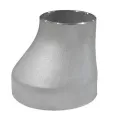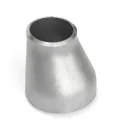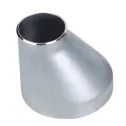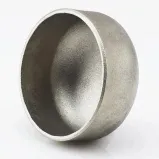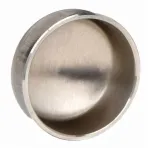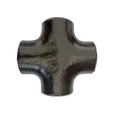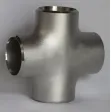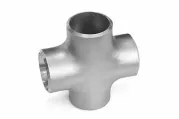-
Cangzhou Yulong Steel Co., Ltd.
-
Phone:
+86 13303177267 -
Email:
admin@ylsteelfittings.com
- English
- Arabic
- Italian
- Spanish
- Portuguese
- German
- kazakh
- Persian
- Greek
- French
- Russian
- Polish
- Thai
- Indonesian
- Vietnamese
- Zulu
- Korean
- Uzbek
- Hindi
- Serbian
- Malay
- Ukrainian
- Gujarati
- Haitian Creole
- hausa
- hawaiian
- Hebrew
- Miao
- Hungarian
- Icelandic
- igbo
- irish
- Japanese
- Javanese
- Kannada
- Khmer
- Rwandese
- Afrikaans
- Albanian
- Amharic
- Armenian
- Azerbaijani
- Basque
- Belarusian
- Bengali
- Bosnian
- Bulgarian
- Catalan
- Cebuano
- China
- China (Taiwan)
- Corsican
- Croatian
- Czech
- Danish
- Esperanto
- Estonian
- Finnish
- Frisian
- Galician
- Georgian
- Kurdish
- Kyrgyz
- Lao
- Latin
- Latvian
- Lithuanian
- Luxembourgish
- Macedonian
- Malgashi
- Malayalam
- Maltese
- Maori
- Marathi
- Mongolian
- Myanmar
- Nepali
- Norwegian
- Norwegian
- Occitan
- Pashto
- Dutch
- Punjabi
- Romanian
- Samoan
- Scottish Gaelic
- Sesotho
- Shona
- Sindhi
- Sinhala
- Slovak
- Slovenian
- Somali
- Sundanese
- Swahili
- Swedish
- Tagalog
- Tajik
- Tamil
- Tatar
- Telugu
- Turkish
- Turkmen
- Urdu
- Uighur
- Welsh
- Bantu
- Yiddish
- Yoruba

Oct . 22, 2024 18:52 Back to list
A Guide to Butt Welding Pipe Fittings
When working with piping systems in industries such as oil and gas, chemical processing, and power generation, butt welding pipe fittings are essential components. These fittings provide a strong, leak-proof connection between pipes, ensuring fluid or gas flow with minimal disruptions. In this guide, we’ll explore the different types of butt weld fittings, their advantages, and how to choose the right suppliers.
What are Butt Welding Pipe Fittings?
Butt welding pipe fittings are used to connect sections of pipe in a piping system. These fittings are welded onto the ends of the pipes by heating both the pipe and the fitting and then pressing them together, creating a joint. This results in a permanent, seamless connection that is ideal for high-pressure and high-temperature applications.
Types of Butt Weld Fittings
Elbows
- 90-Degree Elbow: This fitting changes the direction of flow by 90 degrees. It’s commonly used in pipelines that require a sharp turn.
-
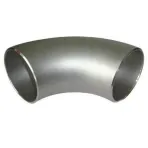
图片文字描述1
-
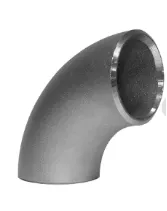
图片文字描述1
-
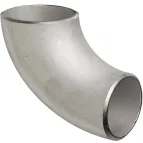
图片文字描述1
- 45-Degree Elbow: This fitting alters the flow direction by 45 degrees, providing a smoother, less abrupt turn.
-

图片文字描述1
-
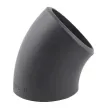
图片文字描述1
-
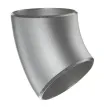
图片文字描述1
- Applications: Elbows are widely used in both industrial and residential piping systems, especially in areas where space is limited.
Tees
- Equal Tee: This type of fitting is used to connect three pipes of the same diameter. It splits the flow into two branches or combines two flows into one.
-
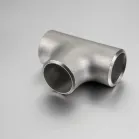
- Reducing Tee: This fitting connects pipes of different diameters, enabling the flow to be divided or merged at various sizes.
-
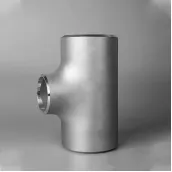
- Applications: Tees are common in systems that require branching, such as plumbing networks and HVAC systems.
Reducers
- Concentric Reducer: This fitting connects two pipes of different diameters, keeping the pipe centerline aligned. It’s typically used in vertical piping systems.
- Eccentric Reducer: Unlike concentric reducers, this fitting has an offset centerline, making it ideal for horizontal piping systems where draining is essential.
-
- Applications: Reducers are essential in systems where there is a need to transition between different pipe sizes.
Caps
- Pipe Cap: A pipe cap seals the end of a pipe, preventing fluid or gas from passing through. It is typically used when the pipeline needs to be terminated.
- Applications: Commonly found in piping systems that require occasional termination or future expansion.
-
Cross
- Equal Cross: A cross fitting connects four pipes, allowing fluid or gas to flow in multiple directions. All four branches are of the same diameter.
-
- Reducing Cross: This fitting has different branch sizes, providing flexibility in distributing the flow in various sizes.
-
- Applications: Cross fittings are often used in fire sprinkler systems or other networks requiring multiple branching points.
Stub Ends
- Lap Joint Stub End: Used with lap joint flanges, this fitting allows for easy removal and replacement in systems where frequent dismantling is required.
- Applications: Stub ends are widely used in systems that need periodic maintenance, such as water and gas pipelines.
Advantages of Butt Weld Fittings--h2
- Strength and Durability: Butt weld fittings create a permanent, seamless connection that is highly resistant to pressure and temperature fluctuations. This makes them ideal for demanding applications.
- Smooth Flow: Since the internal diameter of butt weld fittings matches the pipe, the flow of fluid or gas remains uninterrupted, reducing the risk of turbulence or blockages.
- Corrosion Resistance: These fittings are typically made from materials like stainless steel, carbon steel, and alloy steel, offering excellent resistance to corrosion, making them suitable for harsh environments.
- Cost Efficiency: Butt weld fittings are cost-effective in the long run as they minimize the need for additional fittings and reduce the risk of leaks or repairs.
Choosing the Right Butt Weld Fittings Suppliers
Finding the right buttweld fittings suppliers is crucial to ensuring the quality and reliability of your piping system. Here’s what to look for when choosing a supplier:
Material Quality: Ensure the supplier provides fittings made from high-quality materials like carbon steel, stainless steel, or alloys, which are resistant to corrosion and pressure. This is particularly important for applications involving corrosive fluids or high temperatures.
Certifications: Check for international certifications such as ISO, ASTM, or ASME, which ensure that the fittings meet industry standards for quality and safety.
Customization Options: Many projects require custom sizes or special fittings. A good supplier should offer customization services to meet specific requirements.
Production Capabilities: The supplier should have the capacity to handle both small and large orders with quick turnaround times, ensuring that your project stays on schedule.
Competitive Pricing: Price is always a factor when choosing a supplier. Compare prices from different suppliers, but also consider the quality of the fittings and the level of customer service offered.
Technical Support: A reliable supplier should provide technical support, assisting you with selecting the right fittings for your specific application, especially when dealing with complex systems.
Butt welding pipe fittings are essential for creating strong, reliable connections in various industrial and commercial piping systems. From elbows and tees to reducers and caps, these fittings ensure smooth fluid or gas flow, handle high-pressure conditions, and offer durability over time. When choosing a buttweld fittings supplier, consider factors like material quality, certifications, customization options, and price. Ensuring you work with a reputable supplier guarantees the long-term efficiency and safety of your piping system.
Latest news
-
ANSI 150P SS304 SO FLANGE
NewsFeb.14,2025
-
ASTM A333GR6 STEEL PIPE
NewsJan.20,2025
-
ANSI B16.5 WELDING NECK FLANGE
NewsJan.15,2026
-
ANSI B16.5 SLIP-ON FLANGE
NewsApr.19,2024
-
SABS 1123 FLANGE
NewsJan.15,2025
-
DIN86044 PLATE FLANGE
NewsApr.19,2024
-
DIN2527 BLIND FLANGE
NewsApr.12,2024
-
JIS B2311 Butt-Welding Fittings LR/SR 45°/90° /180°Seamless/Weld
NewsApr.23,2024

Sep . 13, 2024 16:46 Back to list
A Guide to Butt Welding Pipe Fittings
In the world of piping systems, achieving strong and reliable connections is essential for maintaining system integrity and performance. Butt welding pipe fittings offer a robust solution for creating seamless, high-strength joints in pipelines. This guide will explore various butt weld pipe fittings, highlight key considerations when selecting butt welding fittings suppliers, and provide tips for sourcing the best products for your needs.
-
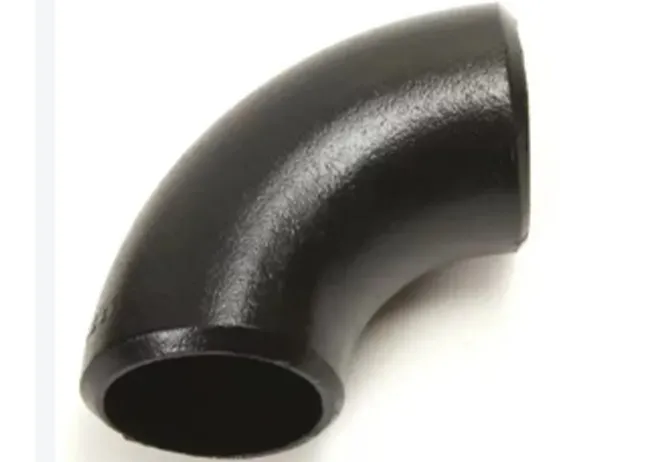
DIN2605-2617 BUTT WELDING PIPE FITTINGS Elbow LR/SR 45°/90°
-
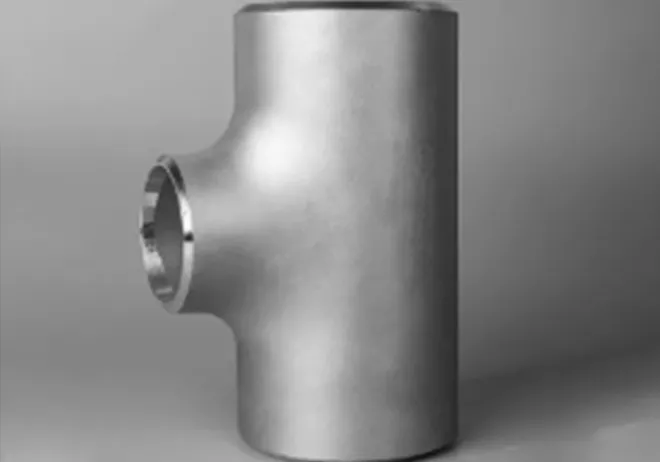
EN10253 BUTT WELDING PIPE FITTINGS Equal Tee/Reducing Tee
Understanding Butt Welding Pipe Fittings
Butt welding pipe fittings are designed to join two pipes or fittings together through a welding process. This method involves aligning the pipe ends and welding them to form a continuous and strong connection. The benefits of using butt welding pipe fittings include:
Strong and Leak-Proof Connections: The butt welding process creates a solid joint that is resistant to leaks, making it suitable for high-pressure and high-temperature applications.
Uniformity: This welding technique ensures a smooth transition between pipes, which helps in maintaining the flow characteristics and reducing turbulence within the system.
Durability: Butt welding pipe fittings are highly durable and can withstand harsh conditions, including extreme temperatures and corrosive environments.
Versatility: Available in various shapes, sizes, and materials, butt welding pipe fittings can be customized to meet the specific needs of different applications.
Common Types of Butt Welding pipe Fittings
Understanding the different butt welding pipe fittings available is crucial for selecting the right components for your project. Here are some common types:
Elbows: Used to change the direction of the piping system, elbows are available in various angles (e.g., 45°, 90°) and can be short or long radius.
Tees: Tees are used to create a branching point in the pipeline. They can be equal or reducing, depending on whether the branch has the same or a different diameter than the main pipe.
Reducers: Reducers are used to connect pipes of different diameters. They come in concentric or eccentric designs, allowing for smooth transitions between different pipe sizes.
Caps: Caps are used to close the end of a pipe, providing a seal that can withstand high pressure.
Couplings: Couplings join two pieces of pipe together, either for extending the length of a pipe or connecting two sections.
Crosses: Similar to tees, crosses have four outlets and are used to create multiple branch points in a piping system.
Why Partner with Butt welding pipe Fittings Suppliers
Partnering with our butt weld pipe fittings suppliers offers several advantages:
High-Quality Products: Leading suppliers provide high-quality butt welding pipe fittings that meet rigorous industry standards, ensuring reliability and performance.
Technical Expertise: Experienced suppliers can offer technical support and advice, helping you choose the right fittings and address any technical challenges.
Competitive Pricing: Reputable suppliers often offer competitive pricing and bulk purchasing options, providing value for money.
Timely Delivery: Reliable suppliers have efficient logistics systems to ensure timely delivery of your orders, helping you stay on schedule.
Comprehensive Support: From product selection to after-sales support, top suppliers provide comprehensive assistance to ensure your needs are met.
Selecting the right butt welding pipe fittings and partnering with reputable butt welding pipe fittings suppliers are critical steps for ensuring the success of your piping projects. By understanding the various butt welding pipe fittings available and considering key factors when choosing suppliers, you can ensure you receive high-quality components that meet your specifications.
Whether you need standard or custom fittings, working with experienced suppliers will contribute to the reliability and efficiency of your piping systems. For more information on specific butt welding pipe fittings, finding the best suppliers, or exploring your options, don’t hesitate to visit our suppliers to get started on your next project.
Latest news
-
ANSI 150P SS304 SO FLANGE
NewsFeb.14,2025
-
ASTM A333GR6 STEEL PIPE
NewsJan.20,2025
-
ANSI B16.5 WELDING NECK FLANGE
NewsJan.15,2026
-
ANSI B16.5 SLIP-ON FLANGE
NewsApr.19,2024
-
SABS 1123 FLANGE
NewsJan.15,2025
-
DIN86044 PLATE FLANGE
NewsApr.19,2024
-
DIN2527 BLIND FLANGE
NewsApr.12,2024
-
JIS B2311 Butt-Welding Fittings LR/SR 45°/90° /180°Seamless/Weld
NewsApr.23,2024






